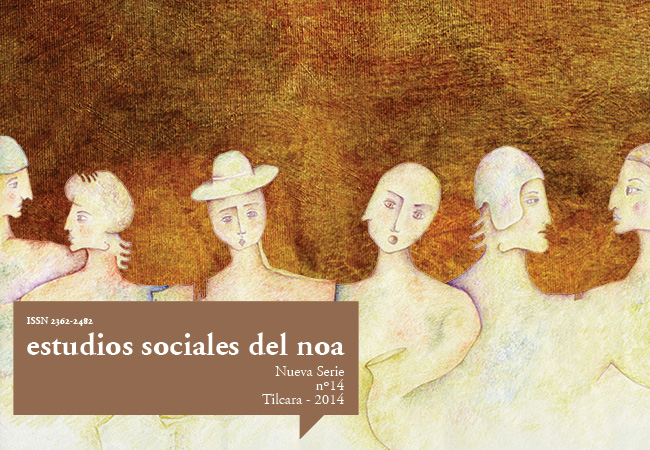Forasteros, originarios, and landholders in the Quebrada de Humahuaca, Jujuy, XVII and XVIII centuries
Abstract
During the second half of the nineteenth century, a number of rural conflicts shook different parts of the province of Jujuy. Peasant demands had as one of its principal foci, leases. These were one of the major ways in which landowners captured the productive surplus of campesino domestic units. Different works have defined the characteristics of this for the XIX century, especially in the Puna region of Jujuy. During the colonial period, this area was home to one of the largest encomiendas of the government of Tucumán, whose trustees were major landowners Puna. It is for this reason that Madrazo (1982) emphasized the existence of a close link between the encomienda system of personal service with the rise of debt peonage and the system of leases that developed in the nineteenth century. However, little is known about this relationship in nearby areas that had similar historical trajectories. The paper aims to analyze some of the characteristics of access to labor on different properties (private and communal) in the Quebrada de Humahuaca in the eighteenth century, as a way to reconstruct the relationship between indigenous communities, outsiders, Spanish owners. We especially focus on the encomienda of Humahuaca.Downloads
Authors who publish in this journal accept the following conditions:
- The authors or translators retain the copyright and assign to the journal the right of first publication, with the work registered under the Creative Commons Attribution-NonCommercial-ShareAlike 4.0 International, which allows third parties to use what published as long as they mention the authorship of the work and the first publication in this journal.
- Authors may enter into other independent and additional contractual agreements for the non-exclusive distribution of the version of the article published in ESNOA (eg, include it in an institutional repository or publish it in a book) as long as they clearly indicate that the work was first published in this journal.












